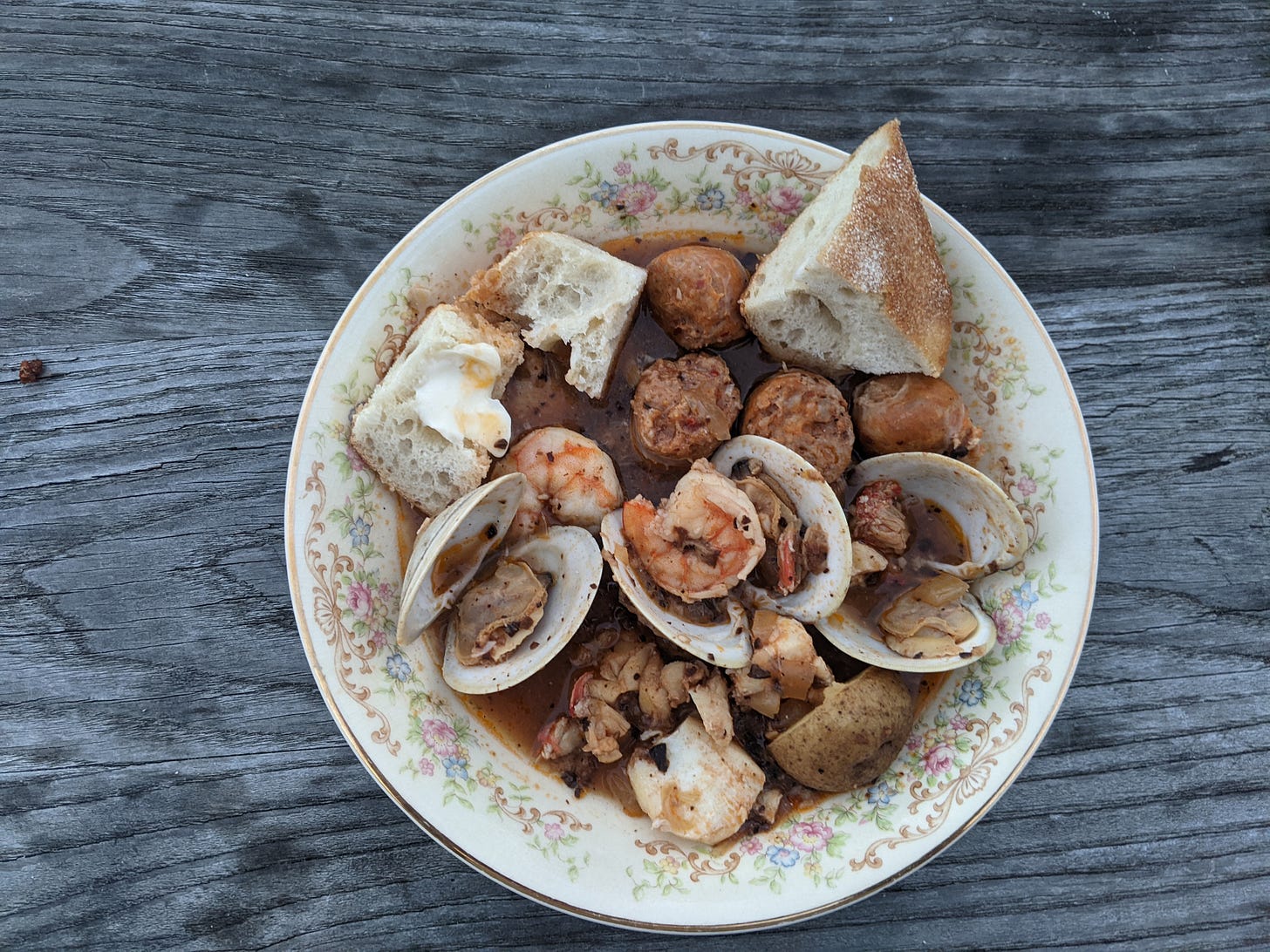Table of Contents
Most Needed Invention of the Week
The Art of Reconstitution Cooking
Most Needed Invention of the Week
Canning jars requiredWhat we have here is the Del-Em, aka menstrual extractor, invented in the pre-Roe v. Wade year of 1971 by two feminist, Lorraine Rothman and Carol Downer. Women groups and health professionals popularized the use of Del-Ems as a very safe way for women to take their own health in hand and end pregnancies. After Roe passed, women in our country didn’t need the device so much but it remained—and still is— very much in use in conservative and repressive third-world countries. This is where we are since yesterday: American women may as well be in a conservative, repressive country and medical professionals are dusting off their old Del-Ems or constructing their own which leads back to the need for all those canning jars you’re not using. Women health care centers and professionals are reporting that they will be using them in the coming months and probably years.
Please consider donating to the following organizations that assist women seeking funds for travel out-of-state, and with childcare and accommodations. Katha Pollitt recently wrote in The Nation that stepping up our efforts to win back our rights will include making some hard decisions, such as deciding that the money you send each month to a Substack newsletter—including mine—would be of better use to one of these organizations. I heartedly agree:
The Art of Reconstitution Cooking New Life for a Fish Stew
There’s only one dish necessary to cook when you find yourself by the sea and that is a fish stew. Every country with a seacoast has at least one heritage recipe. Some countries, such as Italy, have several different ones representing individual regions. You would do yourself a great service by making it a point to search out every seafood stew from all of Africa’s coastal countries so you won’t miss the intricate ways they each use spices.
Since I am down the shore at my sister’s house, and since she is as great a hostess as she is a cook, she greeted me with a Catalonian fish stew with lobster and clams. There was a lot of broth left so a few days later I bought more clams, shrimp, and a small hunk of halibut because it was slightly cheaper and easier to manage than a whole lobster or its tail. I also added pieces of hot Italian sausage which took it out of Catalonia and placed it squarely in the Italian traditions of the New Jersey shore.
Bringing leftovers back to life is easy and, given how much the price of groceries have gone up, an important talent to cultivate. In general, it involves adjusting the spices and herbs because they will have lost a little of their potency or, if they’re hot, intensified. Refresh the stock’s contents by adding a handful or two more of vegetables or meat. As is the case with the directions below, don’t be afraid to add a couple of other ingredients that weren’t in the original recipe. And remember, dumplings and noodles will help stretch the meal to feed another mouth. The additional benefit to this is it allows you to claim the dish is new and not the one you served a few days ago.
For this occasion, you’ll want to start by making the recipe my sister used from The New York Times. It’s a terrific one to know, anyway.
Reconstituted Fish Stew
Leftover fish broth 1/2 pound Italian, or Andalusian or chorizo sausages, cut into bite size pieces Little Neck clams--enough to give each guest at least six Shrimp in about the same quantity as the clams--enough for each guest to enjoy. [See note below] 1/2 a pound firm white flesh fish (I used halibut), cut into bite size pieces Broths usually have a layer of grease on top. Skim it off and pour the stock into a pot that will accept the broth and the addition of all the other ingredients. Taste the broth. It should still be vibrant but the individual pepper flavors may have faded. Don't worry. The sausage will kick the broth alive. Add the sausage and stir. Bring the broth to a slow simmer, cover, and cook until the sausage is well cooked. About a half hour before you are ready to serve, gently drop the clams into the broth and then arrange the shrimp and fish on top. Stir carefully, making sure the clams, shrimp, and fish are covered with broth. Bring it to a simmer and cover. Cook just long enough for the clams to have open and the fish is firm. Turn off the flame and rest the stew for about five minutes before serving. Note: This is messy but sometimes I leave the shells on because it'll bring back the broth's strength. If you do this, simply scoop out the shrimp and, once cooled enough to handle, remove the shells.) To serve: There's absolutely nothing wrong with ladling the stew directly from the pot at the table--this is a casual, somewhat messy dish to collectively enjoy with people who don't mind being sloppy. Have a large empty bowl on hand to discard the clam shells and an equally large basket of sliced French or Italian bread for mopping up the broth. A chilled white and/or beer is perfect.




